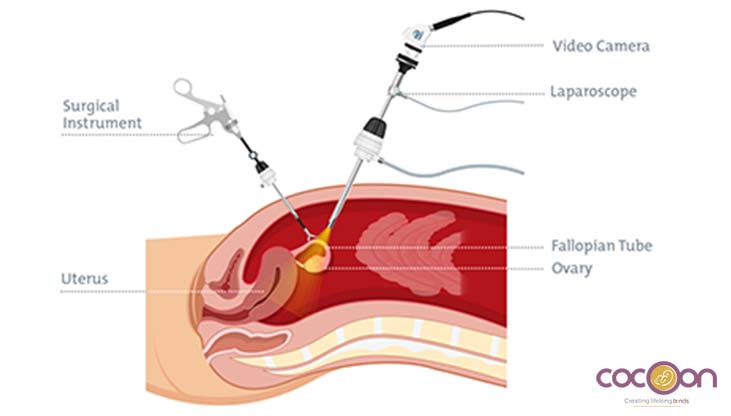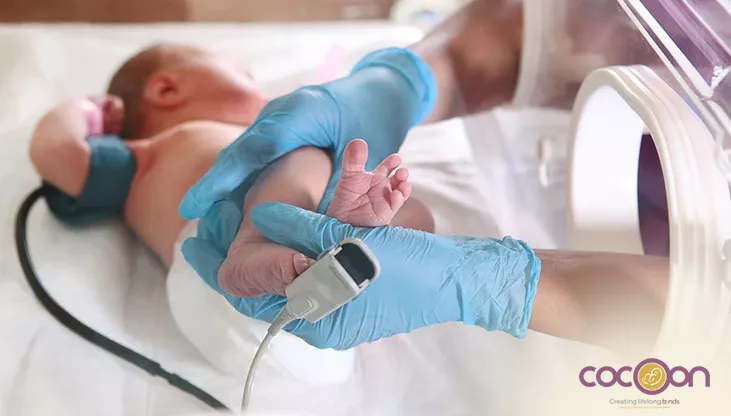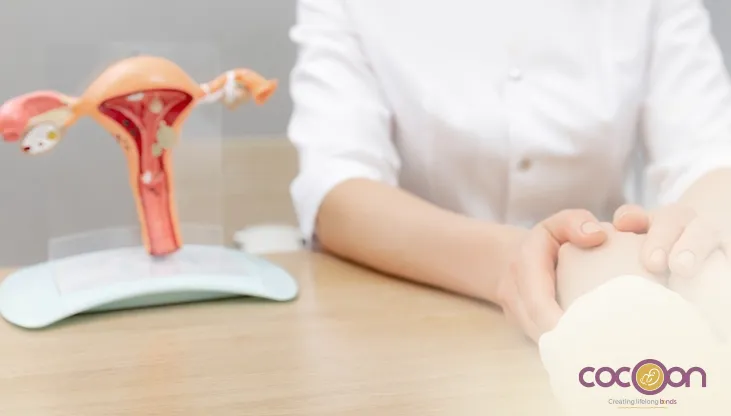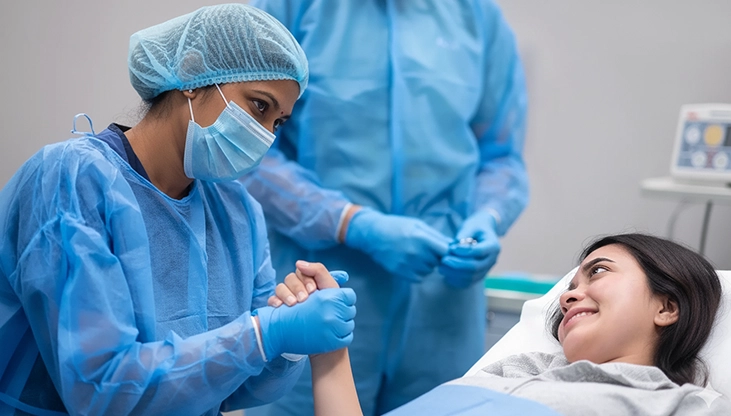When you say "surgery," you're probably thinking of large incisions, extended hospital stays, and agonizing rehab. Yet nowadays, with the advancements of medicine, surgeries can be What Is Laparoscopy Surgery?
Laparoscopy (sometimes called “keyhole surgery”) is a procedure where doctors make very small cuts (incisions) in your abdomen and insert a tool called a laparoscope.
A laparoscope is similar to a thin tube with a small camera and a light on the end. It allows physicians to visually see your organs inside on a large screen, without them having to open up the entire region.
much shorter, safer, and less painful. One is laparoscopy — a new, minimally invasive surgical procedure that allows physicians to view and correct issues within the body without the necessity of large incisions.
In this blog, we’ll explore everything about laparoscopy: what it is, how it is done, recovery time, benefits, and especially how it helps with conditions like endometriosis.
Rather than an 8- or 6-inch incision like in open surgery, laparoscopy typically requires only 2 to 4 tiny incisions, each the size of a button. From these small punctures, doctors are able to diagnose conditions, obtain tissue samples (biopsies), or even conduct entire operations such as the removal of cysts, fibroids, gallbladders, or treatment of endometriosis.
Step-by-Step Laparoscopy Procedure?
Curious about how laparoscopy is performed? Here's an easy step-by-step overview:
Preparation
Before the operation, you might be required to fast for a few hours. You will also get to know your anesthesia team, who will administer you with medicines to put you to sleep throughout the procedure (general anesthesia).
Making Small Incisions:
The surgeon will make one or a few small incisions in your abdomen, typically close to your belly button.
Inflating the Abdomen:
To help your inside be seen better, an inert gas (carbon dioxide) is pumped softly into your abdomen. This keeps your abdominal wall lifted from your internal organs.
Placing the Laparoscope:
The camera tube (laparoscope) goes into one of the incisions. It broadcasts real pictures on a television-like monitor in the operating room.
Conducting the Operation
If treatment is required (such as taking out endometriosis tissue or cysts), tiny surgical instruments are passed via other tiny incisions.
Closing Up:
After the surgery is complete, the instruments are taken out, the gas is released, and the tiny incisions are stitched up or taped with surgical tape.
The entire process typically takes between 30 minutes and 2 hours, depending on what is being treated.
Laparoscopy Recovery Time: What to Expect
One of the largest benefits of laparoscopy compared to open surgery is quicker recovery.
What to Expect After Surgery:
- Hospital Stay: Typically, you can return home on the same day or the following day after surgery.
- Pain Management: You will probably have mild pain or discomfort at the incision sites. A few people also get shoulder pain — this is from the gas used in surgery, and it only lasts briefly.
- First Few Days: Rest is a must. Heavy lifting, running, or vigorous activities should be avoided.
- Back to Work: The majority can resume office or light work after 1–2 weeks.
- Full Recovery: Healing from laparoscopy takes about 2–4 weeks. But if you have complex laparoscopic procedures such as the removal of endometriosis or fibroids, your healing process will be longer.
Adhere to your surgeon's recommendation at all times for the most secure recovery.
Diagnostic Laparoscopy: Finding the Root Cause
Laparoscopy is sometimes not used to treat but only to diagnose issues within the abdomen or pelvis. This is known as Diagnostic Laparoscopy.
Diagnostic laparoscopy is advised by doctors when:
- You have chronic pelvic pain with no apparent cause.
- You are experiencing infertility.
- Imaging tests (such as ultrasound or CT scans) are indeterminate.
- They suspect endometriosis, ovarian cysts, fibroids, or other pelvic conditions.
- When the physician performs diagnostic laparoscopy, he or she might merely look in, take pictures, or take a small sample of tissue for study. If there is an underlying condition, they will treat it simultaneously.
Such early detection can generally avoid years of unnecessary pain or infertility problems, especially in conditions like endometriosis.
Laparoscopic Surgery Advantages: Why to Choose It
Laparoscopy has some key benefits over the conventional open surgery:
- Smaller Cuts and Scars: Since the cuts are tiny, you’ll have much smaller scars — often almost invisible after healing.
- Less Pain: Less tissue damage means you’ll experience less pain after the operation.
- Quicker Recovery: You can get back to your regular life, work, and activities much faster than with open surgery.
- Lower Risk of Infection: Small incisions provide fewer opportunities for infection or wound complications.
- Reduced Hospital Stay: The majority of patients can be discharged the same day or even 24 hours, time and hospital cost saved.
- Improved Internal Vision: The laparoscope provides a very magnified vision, allowing surgeons to see problems clearly and perform accurate operations.
All these benefits render laparoscopy a favourite choice for most doctors and patients worldwide — and in India, where it's now offered in most city hospitals.
Laparoscopy for Endometriosis: A Life-Changer for Many Women
Endometriosis is a debilitating condition where tissue that's similar to the lining inside your uterus starts growing outside of it — on ovaries, fallopian tubes, bladder, or intestines.
This misplaced tissue can result in agonizing pain, abnormal menstruation, infertility, and even gastrointestinal issues.
Endometriosis is not an easy disease to diagnose because symptoms are the same as for other conditions. Here is where laparoscopy enters the scene.
How Laparoscopy Helps:
- Correct Diagnosis: With laparoscopy, doctors can visually inspect and confirm the presence of endometrial growths themselves. No more speculation or just relying on scans.
- Treatment At the Same Time: Once found, endometriosis tissue can typically be destroyed or removed (with heat, lasers, or scissors) simultaneously. This brings immediate relief and is likely to improve fertility.
- Fewer Recurrences: Proper surgery minimizes the chance of endometriosis recurrence.
- Salvation of Organs: As compared to hysterectomy (removal of the uterus), laparoscopic surgery attempts to remove only the diseased tissue, retaining your reproductive organs whenever possible, essential for childbearing women.
- Success Rates: Millions of women across the globe have availed themselves of laparoscopic surgery in overcoming or even eliminating endometriosis pain and infertility. Likewise, in India, top-rated hospitals now offer successful laparoscopic treatments with high success rates.
Key Tips Pre and Post Laparoscopy
Here are some important tips to help you prepare for your laparoscopy and recover smoothly afterward.
Pre-Surgery:
- Adhere to the fasting or medication stoppage advice of your doctor.
- Arrange for somebody to drive you home after the procedure.
Post-Surgery:
- Sleep well for a couple of days.
- Skip heavy work or strenuous activities.
- Drink plenty of water and eat light, healthy food.
- Go to all follow-up visits.
Conclusion
Laparoscopy is a formidable instrument — less painful, less invasive, and quicker to heal. Whether for the diagnosis of chronic pelvic pain, treatment of endometriosis, the removal of fibroids, or fixing infertility problems, this operation can provide solutions and relief.

















